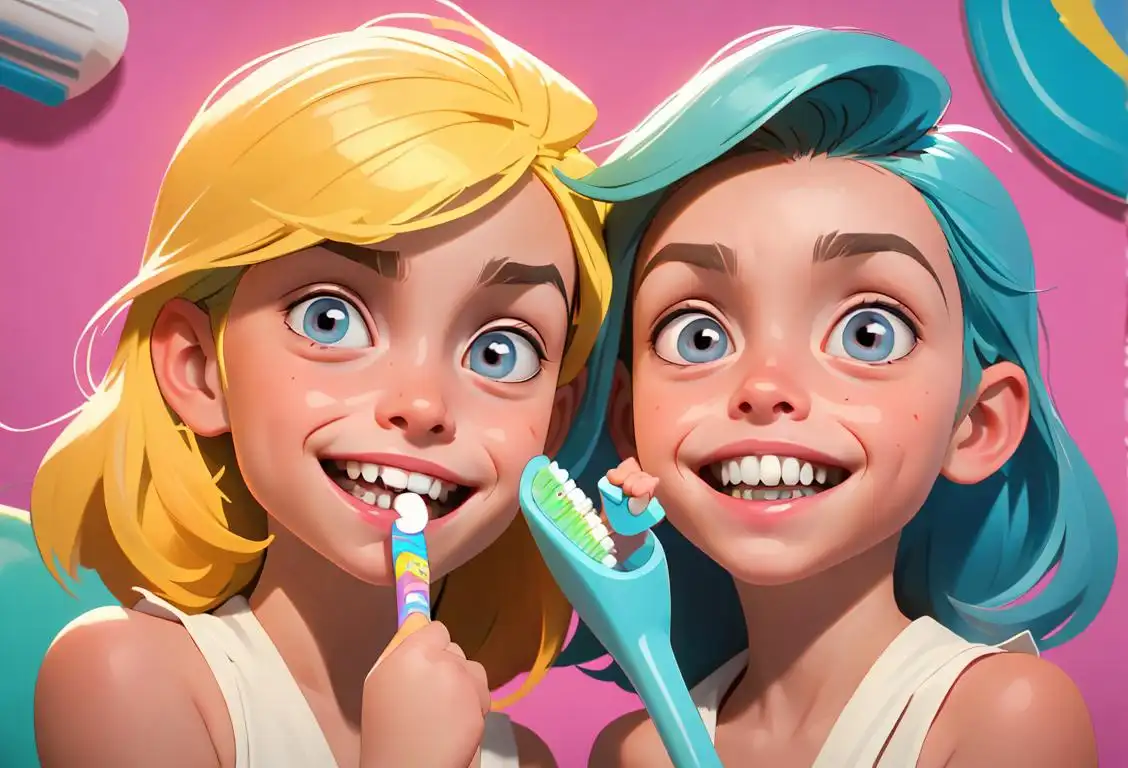National Toothache Day

Happy Toothache Day to all the teeth of the world! Now, I know what you're thinking, 'Isn't every day toothache day for most of us with sweet tooth syndromes?' Fear not, this day isn't a global campaign to give everyone toothaches, but rather, a unique day to raise awareness about dental health and the importance of regular check-ups – yes, that includes you, candy lovers!
When is Toothache Day?
It's national toothache day on the 9th February.
The Root of the Matter: How did Toothache Day Begin?
As fascinating as the internet folklore goes, the birth of the National Toothache Day is steeped in as much mystery as your last lost milk tooth. While not many concrete sources are able to pin down the exact roots (pun intended), it seems like the origin might be linked to the date of when Hershey’s Chocolate Corporation was founded. Coincidence? Probably not as sweet as you’d think!
A Sugar-coated History
Our sources showed there were around 2836 online mentions of this day, many of which were on February 9, 2016. As having a toothache has become as commonplace as seeing new candy bars on the supermarket shelf, it's no wonder that folks would share their woes and simultaneously spread caution about candy-induced cavities on the same day.
Why Should You Floss Over This
Well, besides the fact that no one really enjoys an aching molar, National Toothache Day serves as that friendly, somewhat annoying reminder that taking good care of your teeth is not just for six-year-olds obsessed with their shiny dental star stickers. It's for every chocolate addict, ice cream enthusiast, and passionate popcorn muncher. It’s a day to share your tales of sweet-tooth exploits and toothy adventures with the world, all while encouraging a regular rendezvous with your toothbrush and dental floss.
History behind the term 'Toothache'
4500 BCE
Early Signs
The earliest evidence of dental disorders can be traced back to ancient times. Archaeologists have discovered skulls with signs of dental decay, abscesses, and even impacted wisdom teeth, dating as far back as 4500 BCE. These findings indicate that toothaches and dental problems were a common issue even in ancient civilizations.
2600 BCE
Ancient Dental Treatments
Around 2600 BCE, in ancient Egypt, people began developing rudimentary dental treatments. Dental practitioners of that time, known as "dentists", mostly comprised of skilled individuals who gained knowledge through apprenticeships. They would use various materials such as antlers, copper, and beeswax to create fillings for decayed teeth, providing some temporary relief from toothaches.
500 BCE - 200 BCE
The Greek Influence
During the period of 500 BCE to 200 BCE, ancient Greek scholars, including Hippocrates and Aristotle, made significant contributions to the field of dentistry. Hippocrates, often regarded as the father of modern medicine, wrote extensively about dental practices and treatments. It was during this time that the term "odontalgia" emerged, referring to the specific pain in and around the teeth.
1663 CE
Early Molar Extraction
In 1663, the term "toothache" first appeared in English, derived from the combination of "tooth" and "ache." During this period, dental treatments were generally limited to extracting severely damaged or painful teeth. The methods employed were often crude and painful, involving the use of forceps or even tying a string around the tooth and using it as leverage to pull it out.
18th Century
Advancements in Dental Care
Throughout the 18th century, dental care and treatments significantly evolved, with the establishment of dentistry as a recognized profession. Innovations such as the invention of the dental drill, the development of mercury-based amalgam fillings, and the introduction of more effective tooth extraction techniques helped alleviate toothache-related suffering to a certain extent.
1913
Local Anesthesia
In 1913, the advent of local anesthesia revolutionized dentistry. Dr. Alfred Einhorn, a German chemist, introduced the first effective local anesthetic called procaine, commonly known as Novocain. This breakthrough allowed for painless dental procedures, reducing the distress associated with toothaches and dental treatments.
20th Century - Present
Modern Dental Care
In the 20th century, dental care and the understanding of toothaches and oral health reached new heights. The introduction of dental X-rays, advanced oral hygiene techniques, the development of dental implants, and the use of fluoride in dental treatments all played significant roles in preventing and treating toothaches. Nowadays, dental professionals employ various advanced technologies to diagnose, treat, and prevent toothaches in modern society.
Did you know?
Did you know? Elephants have the longest toothache of all! Their teeth can weigh over six pounds and measure a foot long. Makes your toothache seem a bit less dramatic, doesn't it?Tagged
awareness food fun health oral hygieneFirst identified
31st October 2015Most mentioned on
9th February 2016Total mentions
2836Other days
Toothache Day
Eating Disorder Week And I To This Day
No Smoking Day
Ampalaya Day
Swallowing Awareness Day
Flossing Day
Frozen Yogurt Day
Kale Day
Spinach Day
Broccoli Day







